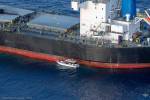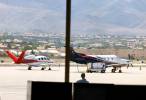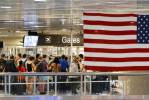Virgin Galactic pilot thrown free as spaceship broke, says NTSB
LOS ANGELES — The surviving pilot of the Virgin Galactic spaceship that tore apart over the Mojave Desert did not know his co-pilot had prematurely unlocked the braking system and within seconds was thrown clear of the disintegrating craft, federal investigators said Wednesday.
In its update on the still-evolving investigation, the National Transportation Safety Board did not explain what caused SpaceShipTwo to crash Oct. 31 in Southern California. That conclusion won’t come for perhaps a year.
The NTSB previously said the ship designed to fly tourists to the edge of space broke apart a few seconds after the co-pilot unlocked the braking system, which happened too early.
Pilot Peter Siebold told investigators Friday that he was flung from the vehicle when it disintegrated. He said he unbuckled from his seat at some point during his fall that began miles above Earth, and his parachute deployed automatically.
Investigators have not revealed the exact altitude of the breakup, but previous SpaceShipTwo test flights peaked at about 10 miles. That height is well below the goal of sending commercial flights about 62 miles up for a fleeting sense of weightlessness and a spectacular view of Earth.
The crash injured Siebold and killed co-pilot Mike Alsbury.
While the full investigation could take up to a year to complete, NTSB Acting Chairman Christopher Hart identified the vehicle’s unique “feather” braking system as a possible culprit. The craft is designed to shift its shape as it re-enters the atmosphere. The twin tails, or feathers, tilt upright to create drag as the vehicle plummets to Earth.
Engaging the feathering system is a two-step process. A pilot must first unlock the system and then pull a lever to activate the feathers.
The feathers aren’t supposed to be unlocked until the craft reaches Mach 1.4, or more than 1,000 mph. However, co-pilot Alsbury could be seen on inflight video unlocking the system before the vehicle had reached Mach 1.0, Hart has said. The second step to activate the feathers was never taken, but the system engaged anyway. Two or three seconds later, the craft began to break apart.
The NTSB has said the feathers could have deployed because of aerodynamic forces on the craft. The agency said Wednesday that it continues to look into the forces on the vehicle.
Federal officials also said Wednesday that it is reviewing safety documentation and the design of the feather system.
In an interview last week, Virgin Galactic CEO George Whitesides said the company has been constructing a replacement craft and wants to resume test flights as early as next summer. The eventual goal is to launch spaceships carrying six passengers, each paying $250,000 for the ride, from a spaceport in New Mexico.




























